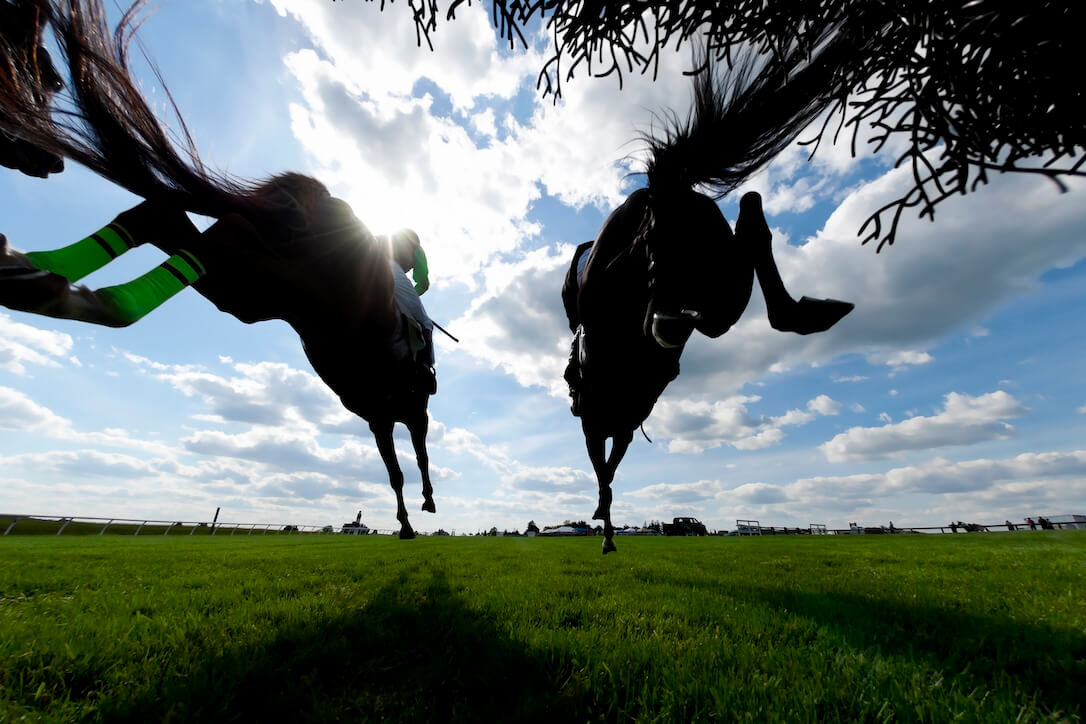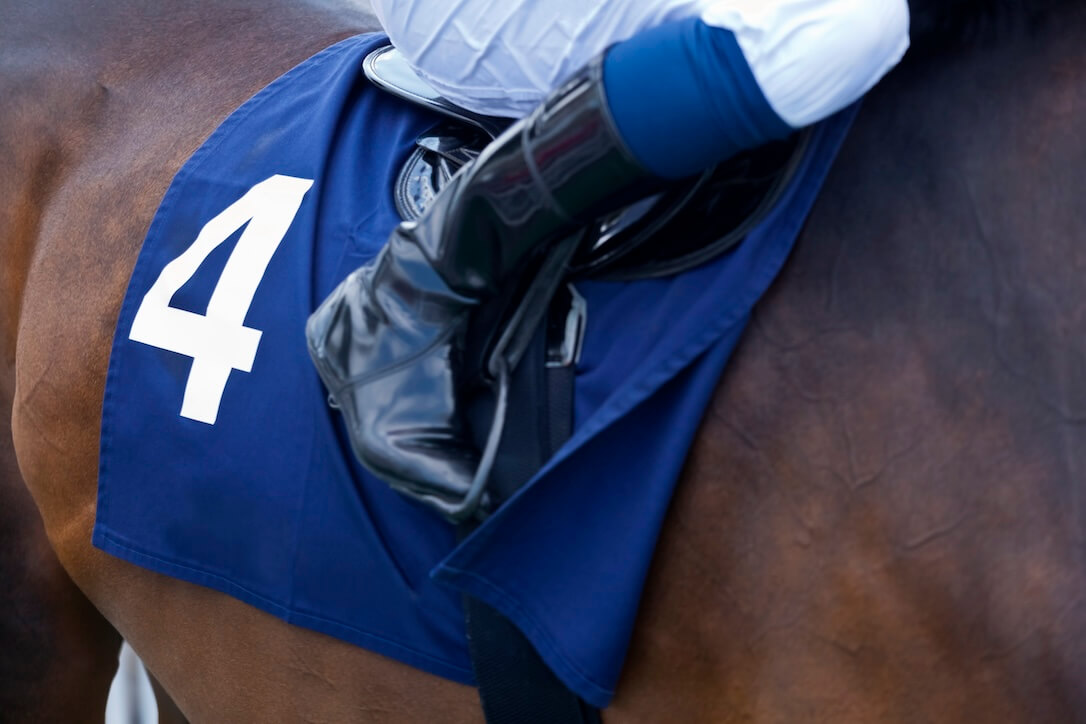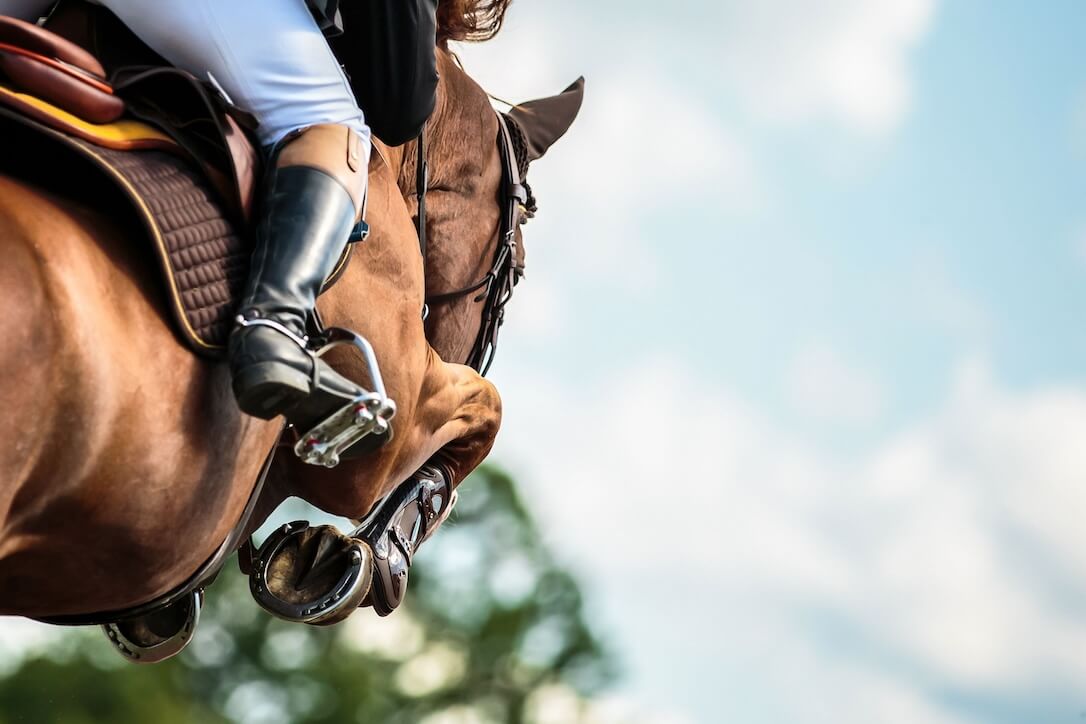Your cart is empty
Sport 20 June 2025
Sports Betting Guides
How To Bet On Horse Racing: Beginners Guide

How To Bet on Horse Racing
- TYPES OF HORSE RACE
- FLAT RACING
- JUMP RACING (NATIONAL HUNT)
- HARNESS RACING
- ENDURANCE RACING
- TYPES OF HORSE RACING BET
- ANTE POST BETTING
- EACH-WAY BETTING
- WHAT IS A TRIFECTA IN HORSE RACING?
- LUCKY 15 BET
- TRIXIE BET EXPLAINED
- YANKEE BETTING
- HORSE RACING BETTING TIPS
- HORSE’S AGE, WEIGHT, AND FORM
- THE GOING AND DISTANCE
- GATE POSITIONING
- CHECK THE JOCKEY AND TRAINER
- BET ON HORSE RACING WITH LOTTOLAND
Horse racing is one of the most popular sports to bet on in Ireland. With its origins dating back thousands of years, it has developed a vocabulary and culture all of its own, which to the uninitiated could seem complex and opaque. This couldn't be further from the truth! Horse racing is a much easier sport to understand than it first appears, as you'll quickly understand once you have read our guide about how to bet on horses.
Types of Horse Race
If you are thinking about learning how to bet on horse racing, then you may have already heard of famous horse tracks such as the Curragh and Leopardstown. You may even have heard about some of the renowned international tracks such as Ascot and Churchill Downs. However, do you know what type of horse race they usually host? Moreover, do you know why understanding what type of horse race you are betting on is important? Let us explain…
Flat Racing
Flat races are the most common (and popular) form of horse racing in the world. In a flat race, horses will race from Point A to Point B, on a flat track with no obstacles. The distance in these races can vary from a sprint race of less than a mile, to endurance-style races of more than two miles.
Even if you are unfamiliar with horse racing in general, it is likely that you are already aware of at least three famous flat races. This is because all three of the Triple Crown events (2000 Guineas, Derby, and St Leger) are flat races. You may well have also heard of some famous examples from around the world, such as the American Kentucky Derby and Australia’s Melbourne Cup.
Jump Racing (National Hunt)
Most popular in Ireland, the UK, and France, jump racing involves navigating horses around a track that contains obstacles such as hurdles, fences, or ditches. This type of race is usually longer than a flat race, offering a test of not just a horse's speed, but also its jumping ability.
Ireland’s Punchestown Festival and the UK’s Grand National are prime examples of this form of race. You may have heard of another famous jump race from the UK, the prestigious Cheltenham Gold Cup.
Harness Racing
While Northern Europe has popularised the jump race, North America could well claim harness racing for its own. It is a markedly different type of race to the two that have come before as in this race the jockey does not ride on the horse's back. Instead, the horse will pull a two-wheeled cart (a “sulky”) where the jockey sits.
If you decide to bet on harness racing, you will find that there are two distinct styles of race, each with its own set of rules. The first is trotting, where the horses will move their legs in diagonal pairs and galloping is not allowed. Pacing, meanwhile, involves the horse moving the legs on the same side of its body together. While both styles of movement come naturally to horses, it takes a skilled jockey to maintain the required gait throughout a race.
Endurance Racing
While the types of race previously mentioned may only last for a matter of minutes, endurance races offer a radically different proposition. These races are designed to test the stamina and fortitude of the rider more so than the horse, over much longer distances and on much more testing terrain. For example, The Tevis Cup in the USA consists of a 100-mile ride through the Sierra Nevada Mountains.
Most endurance races range from 50 to 100 miles, with one notable exception. The Mongol Derby is a race inspired by the horse messenger system of Genghis Khan in the 13th Century. In this race, riders compete to complete the 1000-kilometre course over 7 to 10 days. While horses are exchanged every 40k to avoid overexertion, there is no such respite for the riders. Unsurprisingly, the Mongol Derby is widely considered to be the most challenging horse racing event in the world!
Types of Horse Racing Bet

Horse racing offers all the usual types of sports bet, and some styles of bet that are a little bit more exotic! When learning how to bet on horse racing, it is vital that you understand how these more unusual bets work to make sure you don’t miss out on a tempting flutter!
Ante Post Betting
“Ante-Post” comes from the Latin for “before the post”. As you may expect, it refers to a bet that is made well in advance of the race taking place. These bets are not posted in the hours leading up to the race, instead they will be placed days or months ahead of time.
In general, this type of bet offers better odds than those offered on the day of the race. However, these higher odds also reflect the higher risk associated with it. If you place an ante-post then you are often betting without the complete picture. You cannot be sure of your horse’s form, nor how the weather may affect the race. In addition to this, if your horse does not run in the race, you will usually lose your stake!
Each-Way Betting
Each way betting is effectively two bets in one. When you make each way bets you are betting on the horse to win and/or “place”. While the winning aspect of the bet needs no explanation, the “place” bet requires some clarification.
For a horse to “place” it must finish in one of the top positions in the race. So, what constitutes a “place”? This varies from bookie to bookie, but generally finishing in the top three positions will be considered a “place”. This means that if your chosen horse does not finish first, you will receive a payout if it finishes second or third.
What is a Trifecta in Horse Racing?
A Trifecta is a bet usually only attempted by the most experienced punter – and even then it is high risk! It requires you to predict the three horses that will finish first, second and third in the race – and you must select them in the correct order. Unsurprisingly this is a particularly difficult bet to land, but it does offer the potential for a significantly larger payout than most other types of horse racing bet.
Lucky 15 Bet
If the Trifecta seems a little too high-risk for your taste, then the Lucky 15 may appeal. The Lucky 15 is made up by 15 separate bets on four horses. When placing a Lucky 15 you are wagering on four singles, six doubles, four trebles and a fourfold accumulator. Thanks to the way that this bet covers a multitude of different outcomes it offers a more attractive balance of risk and potential reward.
Trixie Bet Explained
Anyone who has ever placed an accumulator bet has likely experienced the disappointment of just one of your selections costing you the entire bet. If that sounds familiar to you, then a Trixie could be worth some consideration. You see, in a Trixie bet not all of your selections need to win.
How a Trixie works is that you place four bets, using three horses in different events. This bet takes the form of three doubles and a treble, and you only need two of your selections to win to get a payout!
Yankee Betting
Placing a Yankee bet means taking eleven bets on four selections across different events. This bet is made up of six doubles, four trebles and a fourfold accumulator. Similar to a Trixie, you only need two of your bets to win to get a payout. Due to this it offers an interesting way to bet on multiple races to increase the potential payout, although the risk is also higher.
Horse Racing Betting Tips

There is no sure-fire way to guarantee a win when you bet on horse racing (or any other sport for that matter!), however there are some betting tips that you should keep in mind before you place that first bet.
Horse’s Age, Weight, and Form
A lot of casual punters make the mistake of paying more attention to a horse’s name than its age, weight and form – big mistake! Knowing the vital statistics of your horse is essential to give yourself a chance of placing a successful bet.
Consider the horse’s age. If it is younger it may be quicker, but if it is older it may be more experienced. Is the horse in good shape? If it is coming into a race heavier than usual, then that could be an indication that it is not in its best racing condition. How has its form been? Recent races are usually a good indication of what you can expect in the race. For example, if you notice that a horse has been finishing in the top places recently, and it is also carrying less weight than it has before, then it could be worthy of further consideration.
The Going and Distance
As some horses prefer racing in certain conditions, it is important to know the “going” (the condition of the racecourse). Some horses may excel on hard tracks, while others may be better suited to muddy conditions. At the same time, consider the race distance. Does the horse struggle for stamina over longer distances? Or does it simply excel in short sprints? It is important for you to understand how the horse fared recently in races with comparable conditions and distances as the horse race you want to bet on.
Gate Positioning
It is not an exaggeration to say that the gate position for a horse can make or break its race – especially in shorter races or courses with tight turns. For example, in a short sprint race the horse starting from an outside gate will have more distance to cover than the one starting on the inside.
Check the Jockey and Trainer
While the horse you choose will play a big factor in the success of your horse racing bet, so too will the jockey and the trainer. Choosing a horse that has been trained by a successful trainer can give you confidence that it should be entering the race in its best position. Meanwhile, if the horse is being ridden by a jockey with a history of success, you can rest assured that they have the experience and understanding to make the split-second decisions that can influence the outcome of the race.
Bet on Horse Racing With Lottoland
Now, are you ready to jump out of the gate and place a bet on horse racing? All you need to start punting is register an account and deposit funds. Good luck!
T
by
Tom
